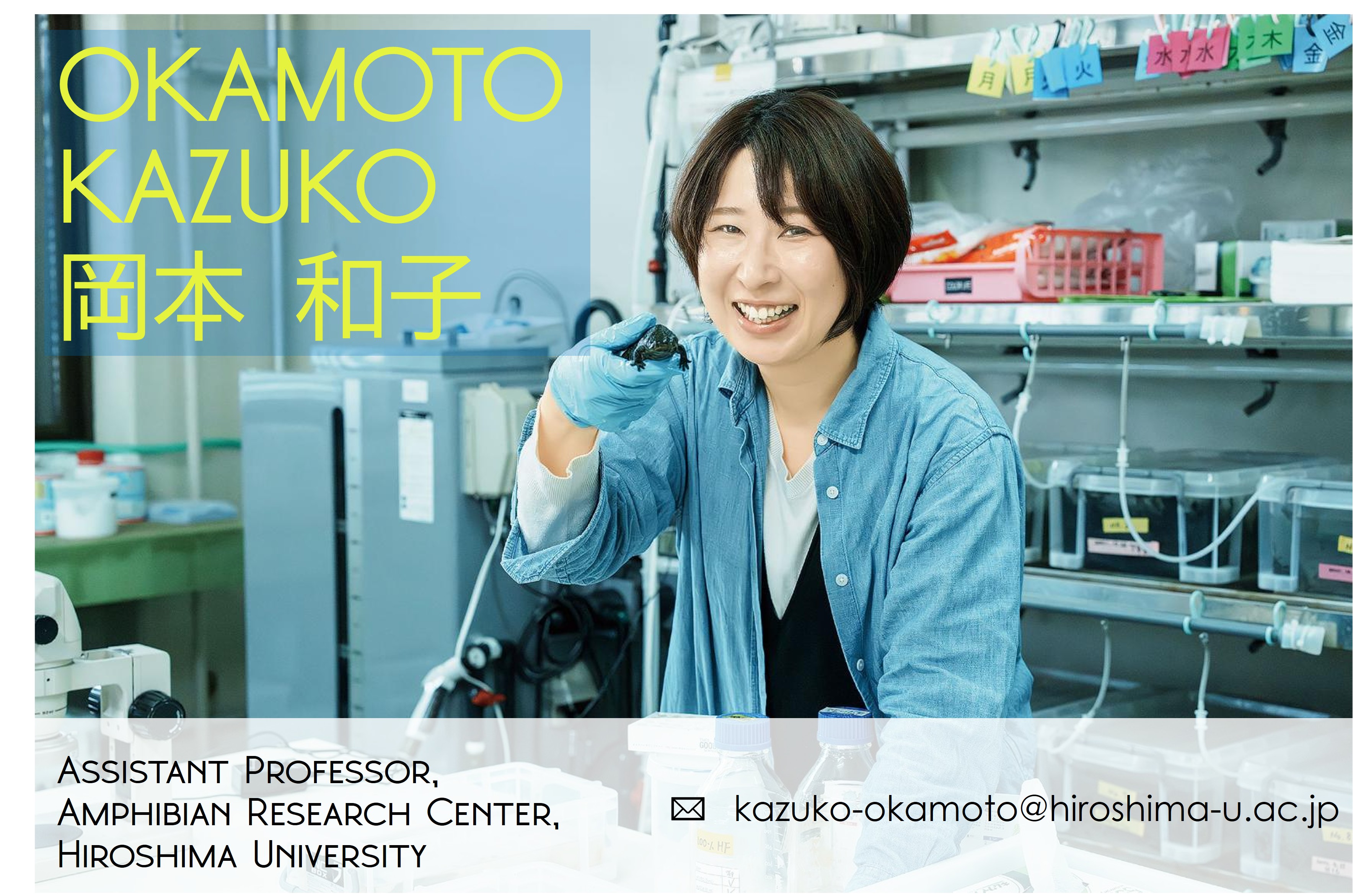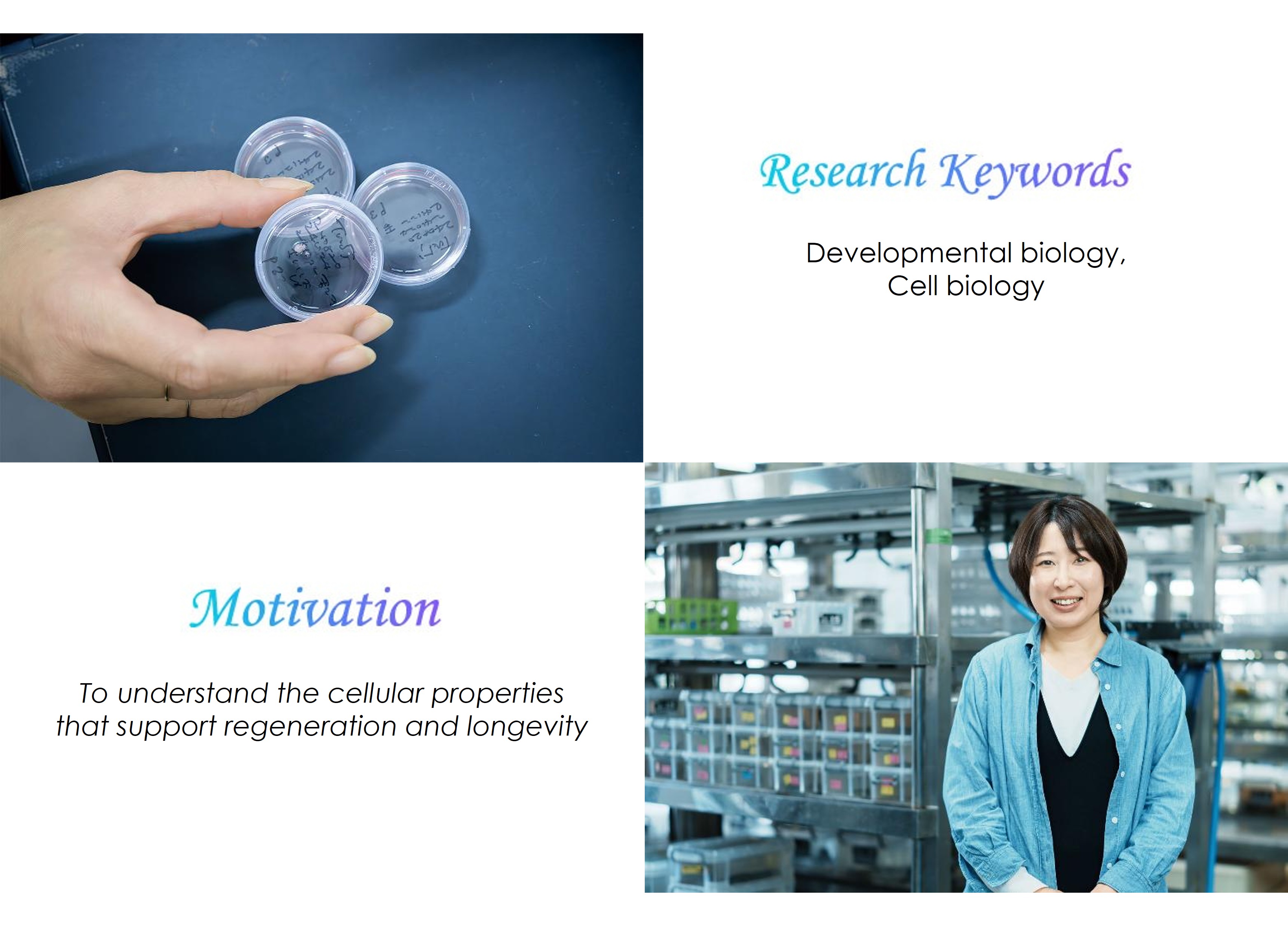

- Okamoto K, Fujita H, Okada Y, Shinkai S, Onami S, Abe K, Fujimoto K, Sasaki K, Shioi G, Watanabe TM. Single-molecule tracking of Nanog and Oct4 in living mouse embryonic stem cells uncovers a feedback mechanism of pluripotency maintenance. EMBO J. 2023 Sep 18;42(18):e112305. DOI
- Okamoto K, Germond A, Fujita H, Furusawa C, Okada Y, Watanabe TM. Single cell analysis reveals a biophysical aspect of collective cell-state transition in embryonic stem cell differentiation. Sci Rep. 2018 Aug 10;8(1):11965. DOI
- Okamoto K, Nakatsukasa M, Alié A, Masuda Y, Agata K, Funayama N. The active stem cell specific expression of sponge Musashi homolog EflMsiA suggests its involvement in maintaining the stem cell state. Mech Dev. 2012 Mar-Jun;129(1-4):24-37. DOI
To view a more comprehensive list of publications, please click on the "researchmap" link below.
Dr. Okamoto was born in Hiroshima Prefecture. In 2003, she entered the Department of Biological Science, School of Science, Hiroshima University. In 2007, she proceeded to the Graduate School of Science, Kyoto University, and obtained her doctorate in 2012. From 2013 to 2018, she served as a researcher at RIKEN (Quantitative Biology Center and Biosystems Dynamics Research). In 2020, she was appointed as an assistant professor at the WPI Nano Life Science Institute, Kanazawa University. She has been in her current position since 2023.
Newts can regenerate a wide variety of body parts, including limbs, tails, the cornea and retina, lungs, intestines, the brain, and the heart. They also live for about 20 years and demonstrate a notable resistance to cancer. To elucidate the mechanisms behind these remarkable regenerative abilities and cancer resistance, Dr. Okamoto uses the Iberian ribbed newt as a model and focuses on the cells themselves, investigating their functions and underlying mechanisms. In addition, she compares newt cells with those of mammals, such as humans and mice, to uncover both commonalities and differences—ultimately aiming to pinpoint the origins of the newt’s unique capabilities. Through extensive experimentation and verification, this research may one day pave the way for novel applications in regenerative medicine and cancer treatment.

 Home
Home




